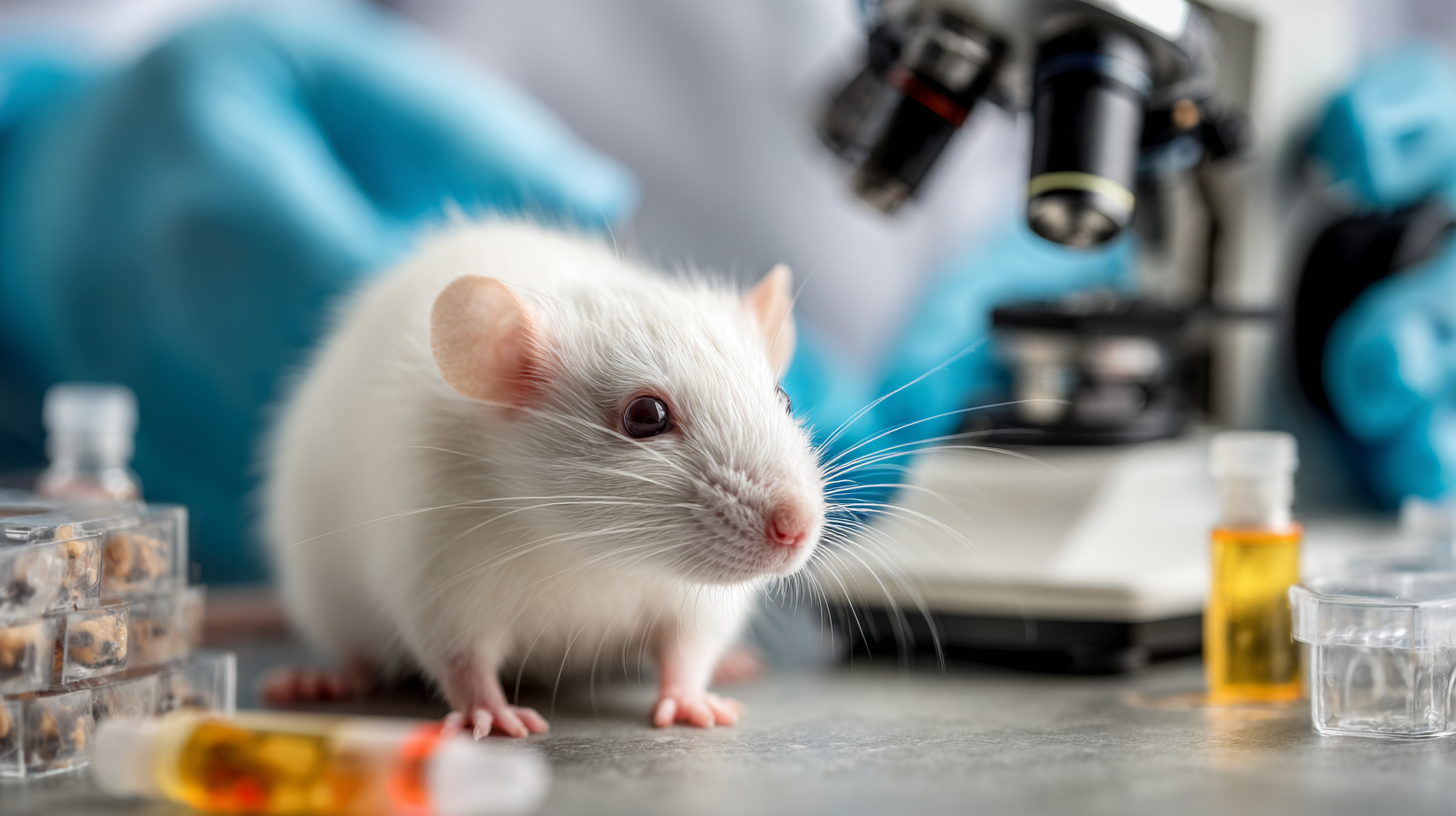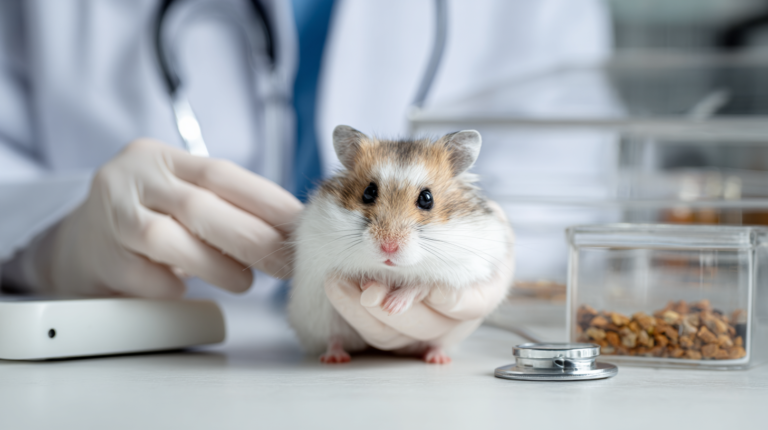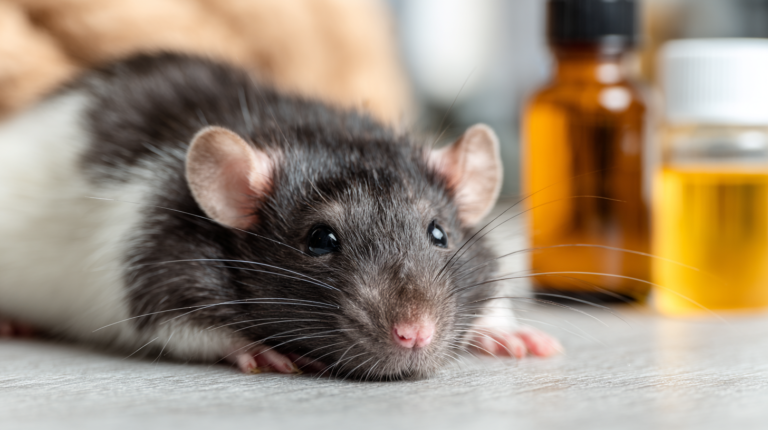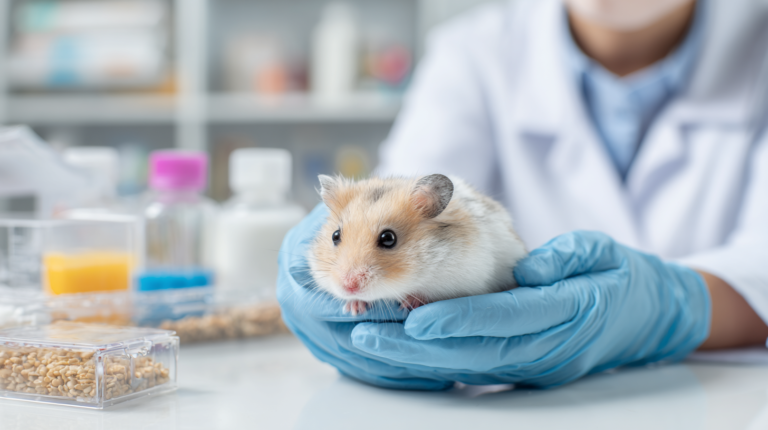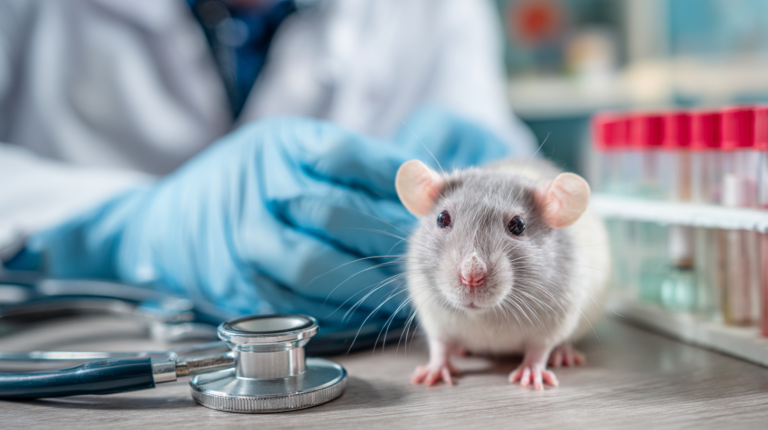Discover the 6 alarming signs of parasites in rodents. Learn how to identify, prevent, and treat parasitic infections in your pet mice, rats, and other rodents.
Table of Contents
Small rodents like mice, rats, hamsters, and guinea pigs bring tremendous joy to millions of households worldwide. These intelligent, social creatures make wonderful companions, but they’re also vulnerable to various health challenges, including parasitic infections. Understanding parasites in rodents is crucial for every pet owner who wants to ensure their furry friends live healthy, comfortable lives.
Parasitic infections represent one of the most common health issues affecting domestic rodents, yet many pet owners remain unaware of the warning signs until the condition becomes severe. Whether you’re a first-time rodent owner or an experienced enthusiast, recognizing the early indicators of parasitic infestations can mean the difference between a quick recovery and serious health complications for your beloved pets.
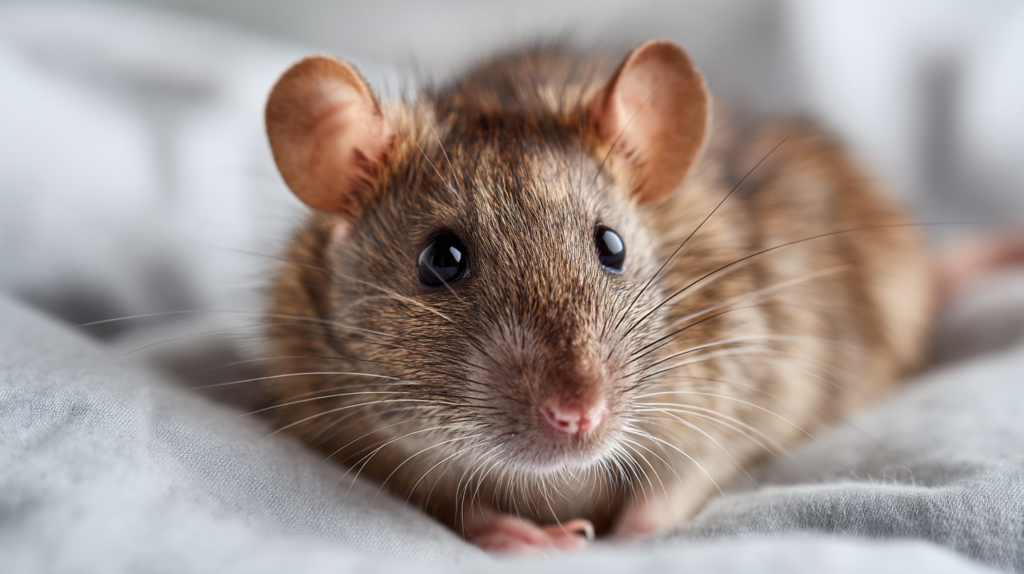
In this comprehensive guide, we’ll explore the six most alarming signs that indicate your rodent may be suffering from parasites, delve into the types of parasites that commonly affect small mammals, and provide you with actionable strategies for prevention and treatment. By the end of this article, you’ll be equipped with the knowledge needed to protect your rodent companions from these troublesome invaders.
Understanding Parasites in Rodents: The Hidden Threat
Before diving into the warning signs, it’s essential to understand what we’re dealing with. Parasites are organisms that live on or inside a host animal, deriving nutrients while potentially causing harm to their host. In rodents, parasites can be broadly categorized into two main groups: external parasites (ectoparasites) that live on the skin and fur, and internal parasites (endoparasites) that inhabit the digestive system, respiratory tract, or other internal organs.
External parasites affecting rodents include mites, lice, fleas, and ticks. These tiny invaders can cause intense itching, skin irritation, and secondary bacterial infections. Internal parasites, on the other hand, encompass various types of worms, protozoa, and other microscopic organisms that can disrupt normal digestive function, nutrient absorption, and overall health.
According to veterinary parasitology studies, approximately 30-40% of pet rodents will experience some form of parasitic infection during their lifetime. The prevalence varies significantly based on housing conditions, hygiene practices, and the source from which the animals were obtained. Rodents acquired from pet stores, for instance, may have higher exposure rates compared to those from reputable breeders who maintain strict health protocols.
Dr. Sarah Mitchell, a veterinary parasitologist at the American Association of Veterinary Parasitologists, explains, “Parasitic infections in small mammals are often underdiagnosed because the symptoms can be subtle initially. By the time owners notice significant changes in their pet’s behavior or appearance, the infestation may have already progressed considerably.”
The Six Alarming Signs: What Every Rodent Owner Must Know
| Sign # | Warning Sign | Description & What to Watch For |
|---|---|---|
| 1 | Excessive Scratching & Grooming | Rodents scratching more frequently than normal, over-grooming specific areas, or showing signs of skin irritation from constant scratching. May indicate external parasites like mites or fleas. |
| 2 | Visible Hair Loss & Patchy Coat | Bald patches, thinning fur, or areas where hair appears broken or damaged. Often accompanies parasitic infections that cause irritation and excessive grooming behaviors. |
| 3 | Skin Irritation & Lesions | Red, inflamed skin, small wounds, scabs, or visible lesions. May appear as bumps, scratches, or areas of damaged skin from parasite bites or scratching. |
| 4 | Changes in Appetite & Eating | Decreased food intake, reluctance to eat favorite foods, or changes in eating patterns. Internal parasites can affect digestion and nutrient absorption. |
| 5 | Lethargy & Reduced Activity | Less active than normal, sleeping more, reduced playfulness, or general lack of energy. Parasites can drain energy and cause overall weakness. |
| 6 | Digestive Issues & Abnormal Droppings | Changes in stool consistency, color, or frequency. May include diarrhea, constipation, or visible parasites/eggs in droppings. Internal parasites directly affect digestive health. |
1. Excessive Scratching and Grooming Behaviors
One of the most noticeable early indicators of parasites in rodents is a dramatic increase in scratching and grooming activities. While all rodents engage in regular grooming as part of their natural behavior, parasitic infestations cause an intense, almost frantic need to scratch and groom affected areas.
Affected rodents may scratch so vigorously that they create wounds or bald patches on their skin. You might observe your pet using their hind legs to scratch behind their ears, along their back, or around their neck area repeatedly throughout the day. This behavior often intensifies during evening hours when many external parasites are most active.
Mites, particularly the Demodex and Sarcoptes species, are common culprits behind excessive scratching in rodents. These microscopic arachnids burrow into the skin or hair follicles, causing intense irritation and inflammatory responses. The constant scratching can lead to secondary bacterial infections, creating a cycle of discomfort that worsens without proper intervention.
Pet owners should be particularly concerned if the scratching behavior is accompanied by other symptoms such as hair loss, redness, or visible wounds. Normal grooming involves smooth, methodical cleaning motions, while parasite-induced scratching appears desperate and repetitive.
2. Visible Hair Loss and Patchy Coat Appearance
Hair loss, also known as alopecia, represents another significant warning sign of parasitic infections in rodents. Unlike natural shedding, parasite-induced hair loss typically appears in distinct patterns and may be accompanied by changes in skin texture and color.
Mite infestations often cause symmetrical hair loss patterns, particularly around the head, neck, and shoulders. The affected areas may appear patchy, with some regions completely bald while others retain thinning fur. In severe cases, the hair loss can spread across the rodent’s entire body, leaving large areas of exposed skin vulnerable to secondary infections.
Fungal parasites, such as those causing ringworm, create circular patches of hair loss with clearly defined borders. These lesions may appear scaly or crusty and can be particularly noticeable on the face, ears, and paws. Unlike bacterial infections, fungal parasites often cause the affected hair to break off at the base rather than falling out entirely.
The texture and appearance of the remaining fur can also provide important clues about parasitic infections. Healthy rodent fur should appear smooth, shiny, and uniform in color. Parasites can cause the coat to become dull, brittle, or discolored. Some external parasites produce waste products that create a dusty or flaky appearance on the fur, while others may cause an oily or greasy texture.
3. Skin Irritation, Redness, and Lesions
Skin changes often accompany parasitic infections in rodents and can range from mild irritation to severe, open wounds. The skin may appear red, inflamed, or swollen in affected areas. Some parasites cause the skin to become thickened or develop a leathery texture, while others create small bumps or raised lesions.
Scabies mites, for example, create characteristic burrow patterns that appear as thin, winding lines beneath the skin surface. These burrows may be difficult to see initially but become more prominent as the infestation progresses. The surrounding skin often becomes red and inflamed, and scratching can lead to secondary bacterial infections that require additional treatment.
Tick attachments create distinct, raised lesions where the parasite has embedded its mouthparts into the skin. These areas may remain red and swollen even after the tick has been removed, and improper removal can lead to infection or the retention of tick parts beneath the skin.
Flea bites typically appear as small, red spots that may be clustered together in areas where the rodent’s fur is thinner, such as the belly, inner thighs, or base of the tail. The bites can cause intense itching, leading to scratching that creates larger wounds or hot spots.
4. Changes in Appetite and Eating Behaviors
Internal parasites can significantly impact a rodent’s digestive system, leading to noticeable changes in appetite and eating behaviors. These changes may manifest as either increased or decreased food consumption, depending on the type of parasite and the severity of the infection.
Intestinal worms, such as roundworms and tapeworms, can cause rodents to experience increased hunger as the parasites compete for nutrients. Affected animals may appear to eat normally or even more than usual but still lose weight or fail to gain weight appropriately. This occurs because the parasites consume significant portions of the nutrients that should be nourishing the host animal.
Conversely, some parasitic infections can cause decreased appetite due to gastrointestinal discomfort, nausea, or changes in taste perception. Rodents with severe parasitic burdens may show little interest in their favorite foods or may eat smaller quantities than usual.
Changes in eating behavior can also include alterations in food preferences. Some parasites affect the digestive system in ways that make certain foods less appealing or more difficult to digest. Rodents may begin avoiding harder foods in favor of softer options, or they may show increased interest in unusual items as their nutritional needs become disrupted.
Dr. Robert Chen, a veterinary gastroenterologist specializing in exotic pets, notes, “Parasitic infections can create a complex cycle of malnutrition in small mammals. The parasites not only compete for nutrients but can also damage the intestinal lining, reducing the host’s ability to absorb nutrients effectively.”
5. Lethargy and Reduced Activity Levels
Healthy rodents are typically active, curious creatures that engage in exploration, play, and social interactions. Parasitic infections can dramatically reduce energy levels, causing affected animals to become lethargic and less responsive to their environment.
Lethargy associated with parasitic infections often develops gradually. Pet owners may first notice that their rodent seems less enthusiastic about activities they previously enjoyed, such as running on exercise wheels, exploring new environments, or interacting with humans. As the infection progresses, the animal may spend increasing amounts of time sleeping or resting in hiding places.
Anemia, which can result from blood-feeding parasites like fleas and certain mites, contributes significantly to lethargy in infected rodents. These parasites consume blood faster than the host can produce new red blood cells, leading to weakness, pale mucous membranes, and reduced exercise tolerance.
Internal parasites can also cause lethargy through nutrient depletion and systemic inflammation. As parasites consume nutrients meant for the host, the rodent’s body struggles to maintain normal energy levels and physiological functions. The immune system’s response to parasitic infections also requires significant energy, further contributing to overall fatigue.
6. Digestive Issues and Abnormal Droppings
Changes in bowel movements and digestive function often provide the earliest and most reliable indicators of internal parasitic infections. Healthy rodent droppings should be well-formed, consistent in size and color, and relatively odorless. Parasitic infections can cause dramatic changes in these characteristics.
Diarrhea is one of the most common digestive symptoms associated with parasites in rodents. The consistency may range from soft and loose to completely liquid, and the frequency of bowel movements typically increases significantly. Some parasites cause bloody diarrhea, which appears as red or dark-colored streaks in the feces.
Conversely, some parasitic infections can cause constipation or changes in the size and shape of droppings. Large parasitic burdens may physically obstruct the digestive tract, leading to smaller, harder droppings or periods where the rodent produces very little waste.
The color of droppings can also change with parasitic infections. Normal rodent feces are typically brown or black, but parasites can cause them to become lighter, darker, or take on unusual colors such as green or yellow. These color changes often indicate disruptions in normal digestive processes or the presence of blood in the digestive tract.
Some parasites produce eggs or segments that are visible in the feces. Tapeworm segments, for example, may appear as small, white, rice-like objects in fresh droppings. These segments may even move slightly when first passed, providing definitive evidence of parasitic infection.
Common Types of Parasites Affecting Rodents
| Parasite Type | Common Species | Primary Symptoms | Severity Level |
|---|---|---|---|
| External Mites | Tropical rat mites, Fur mites | Intense scratching, hair loss, skin irritation, visible movement on skin | High |
| Fleas | Cat fleas, Dog fleas | Excessive scratching, jumping insects visible, flea dirt in fur | Medium |
| Lice | Rodent lice species | Hair loss, skin irritation, visible eggs (nits) on hair shafts | Medium |
| Internal Worms | Pinworms, Tapeworms | Weight loss, changes in appetite, visible worms in droppings | High |
| Coccidia | Eimeria species | Diarrhea, dehydration, lethargy, poor growth in young rodents | High |
| Giardia | Giardia muris | Soft stools, gas, intermittent diarrhea, poor coat condition | Medium |
| Ticks | Various tick species | Visible attached parasites, localized swelling, potential disease transmission | Low |
Understanding the specific types of parasites that commonly affect rodents helps pet owners recognize symptoms and seek appropriate treatment. Each type of parasite presents unique challenges and requires specific management approaches.
External Parasites
Mites represent the most frequent external parasites affecting pet rodents. Demodex mites live within hair follicles and sebaceous glands, often causing localized hair loss and skin thickening. These mites are microscopic and typically require veterinary diagnosis through skin scrapings. Sarcoptes mites, which cause scabies, create characteristic burrow patterns and intense itching.
Lice are small, wingless insects that spend their entire lifecycle on the host animal. They cause intense itching and can be visible to the naked eye as small, moving specks on the fur. Lice eggs, called nits, attach firmly to hair shafts and appear as small, white or yellow oval structures.
Fleas can affect rodents, particularly those housed in multi-pet environments. These small, jumping insects feed on blood and can cause anemia in heavily infested animals. Flea dirt, which appears as small black specks in the fur, consists of digested blood and confirms the presence of fleas.
Internal Parasites
Pinworms are among the most common internal parasites in rodents. These small, white worms live in the cecum and colon, causing digestive upset and anal itching. Female pinworms migrate to the anal area to lay eggs, which can sometimes be seen as small, white specks around the anus.
Roundworms affect the small intestine and can cause significant digestive disturbances. These parasites can grow quite large and may be visible in vomit or feces. Heavy roundworm infestations can cause intestinal blockages, particularly in smaller rodent species.
Tapeworms consist of segmented bodies that can reach considerable lengths within the digestive tract. The segments break off and are passed in the feces, appearing as small, white, rice-like objects. Tapeworms require intermediate hosts, such as fleas or insects, to complete their lifecycle.
Giardia is a protozoan parasite that causes severe diarrhea and digestive upset. This microscopic organism attaches to the intestinal wall and interferes with normal nutrient absorption. Giardia infections are particularly common in rodents obtained from pet stores or breeding facilities with poor sanitation.
Risk Factors and Prevention Strategies
Preventing parasitic infections requires understanding the conditions that promote parasite transmission and implementing comprehensive management strategies. Several factors increase the risk of parasitic infections in rodents, many of which can be controlled through proper husbandry practices.
Environmental Factors
Housing Conditions play a crucial role in parasite prevention. Overcrowded conditions, poor ventilation, and inadequate cleaning schedules create ideal environments for parasite proliferation. Maintaining appropriate population densities, ensuring adequate ventilation, and implementing regular cleaning protocols significantly reduce parasite risks.
Humidity and Temperature affect parasite survival and reproduction rates. Many external parasites thrive in warm, humid conditions, while others prefer cooler, drier environments. Maintaining optimal environmental conditions for your specific rodent species not only promotes general health but also creates less favorable conditions for parasites.
Substrate and Bedding can harbor parasites and their eggs. Using appropriate bedding materials, changing them regularly, and avoiding substrates that retain moisture help prevent parasite establishment. Some bedding materials, such as cedar shavings, may have natural parasite-repelling properties, though they should be used cautiously due to potential respiratory irritation.
Management Practices
Quarantine Protocols represent one of the most effective prevention strategies. New rodents should be isolated from existing pets for at least 2-4 weeks, allowing time for any parasitic infections to manifest and be treated before introducing them to the main population. During quarantine, new animals should be thoroughly examined and may require preventive treatments.
Regular Health Monitoring enables early detection of parasitic infections before they become severe. Weekly health checks should include examining the skin and fur for signs of external parasites, monitoring eating and drinking behaviors, and observing general activity levels. Keeping detailed health records helps identify patterns and changes that might indicate developing problems.
Proper Nutrition supports immune system function and helps rodents resist parasitic infections. Well-nourished animals are better equipped to fight off parasites and recover more quickly from infections. Providing species-appropriate diets with adequate protein, vitamins, and minerals is essential for maintaining parasite resistance.
Hygiene and Sanitation
Cleaning Protocols must be consistent and thorough to prevent parasite establishment. Food and water containers should be cleaned daily, and the entire habitat should be thoroughly sanitized weekly. Using appropriate disinfectants that are effective against parasites while being safe for rodents is crucial.
Waste Management requires immediate attention to prevent parasite lifecycle completion. Feces and contaminated bedding should be removed promptly and disposed of properly. Some parasites can survive in the environment for extended periods, making thorough cleaning essential.
Hand Hygiene protects both pets and humans from parasite transmission. Handlers should wash their hands thoroughly before and after handling rodents, cleaning cages, or providing care. Some parasites can be transmitted between species, making proper hygiene practices important for preventing cross-contamination.
Treatment Approaches and Veterinary Care
| Treatment Phase | Timeline | Key Actions Required | Expected Outcomes |
|---|---|---|---|
| Initial Detection | Day 1 |
|
Symptom identification and professional consultation booked |
| Veterinary Diagnosis | Days 1-3 |
|
Confirmed diagnosis and customized treatment protocol |
| Treatment Initiation | Days 3-7 |
|
Treatment begins, initial symptom management |
| Active Treatment | Weeks 2-4 |
|
Visible improvement in symptoms, parasite reduction |
| Follow-up Treatment | Weeks 4-8 |
|
Elimination of adult parasites and eggs |
| Recovery Monitoring | Weeks 8-12 |
|
Full recovery achieved, prevention measures in place |
Effective treatment of parasites in rodents requires accurate diagnosis and appropriate therapeutic interventions. While some mild external parasitic infections might respond to over-the-counter treatments, most parasitic infections require veterinary diagnosis and prescription medications for successful resolution.
Diagnostic Procedures
Fecal Examinations represent the gold standard for diagnosing internal parasites. Fresh fecal samples are examined under microscopic magnification to identify parasite eggs, larvae, or adult organisms. Multiple samples collected over several days may be necessary to detect intermittent parasite shedding.
Skin Scrapings help identify external parasites that live within the skin or hair follicles. Veterinarians use specialized tools to collect samples from affected areas, which are then examined microscopically. This procedure may cause mild discomfort but is essential for accurate diagnosis.
Direct Examination involves visual inspection of the rodent’s fur, skin, and external surfaces for visible parasites. Many external parasites can be identified through careful examination, though some may require magnification or special lighting techniques.
Treatment Protocols
Antiparasitic Medications form the cornerstone of parasite treatment. The specific medication depends on the type of parasite identified and the severity of the infection. Common treatments include ivermectin for mites, fenbendazole for intestinal worms, and specialized shampoos for external parasites.
Supportive Care addresses the secondary effects of parasitic infections, such as dehydration, nutritional deficiencies, and secondary bacterial infections. Supportive treatments may include fluid therapy, nutritional supplements, and antibiotics when bacterial complications are present.
Environmental Treatment prevents reinfection and eliminates parasite eggs or larvae from the environment. This may involve thorough habitat cleaning, bedding replacement, and application of environmental sprays or treatments designed to eliminate parasites from the surrounding area.
Treatment Monitoring
Follow-up Examinations ensure treatment effectiveness and monitor for potential complications. Most parasitic infections require multiple treatments over several weeks, with periodic examinations to assess progress and adjust treatment protocols as needed.
Medication Compliance is crucial for successful treatment outcomes. Pet owners must administer medications exactly as prescribed, complete the entire treatment course, and follow any special instructions regarding food restrictions or environmental modifications.
The Role of Nutrition in Parasite Prevention
Proper nutrition plays a fundamental role in preventing parasitic infections and supporting recovery in affected rodents. A well-balanced diet strengthens the immune system, promotes healthy skin and coat condition, and provides the energy needed to resist parasitic invasions.
Essential Nutrients for Immune Function
Protein Requirements are particularly important for rodents fighting parasitic infections. High-quality protein sources support immune cell production and antibody formation. Infected rodents may require increased protein intake to compensate for parasitic nutrient consumption and support tissue repair.
Vitamin Supplementation can enhance immune function and recovery rates. Vitamin C, essential for many rodent species, supports immune cell function and wound healing. B-complex vitamins help maintain energy levels and support nervous system function, both of which may be compromised during parasitic infections.
Mineral Balance affects immune response and overall health. Zinc deficiency, for example, can impair immune function and increase susceptibility to parasitic infections. Iron deficiency, which can result from blood-feeding parasites, requires careful correction to prevent anemia.
Feeding Strategies During Treatment
Appetite Stimulation may be necessary for rodents with reduced food intake due to parasitic infections. Offering favorite foods, warming food slightly to enhance aroma, and providing smaller, more frequent meals can help maintain nutritional intake during treatment.
Digestive Support becomes important when internal parasites have damaged the digestive system. Easily digestible foods, probiotics, and foods rich in fiber can help restore normal digestive function and support beneficial gut bacteria.
Hydration Maintenance is crucial, particularly for rodents with diarrhea or other digestive symptoms. Ensuring constant access to fresh water and monitoring water consumption helps prevent dehydration complications.
Creating a Parasite-Resistant Environment
Developing a comprehensive approach to habitat management significantly reduces the risk of parasitic infections and supports overall rodent health. This involves considering all aspects of the rodent’s environment, from housing design to daily maintenance routines.
Habitat Design Considerations
Ventilation Systems help maintain air quality and reduce humidity levels that favor parasite development. Proper air circulation prevents the buildup of ammonia from waste products and reduces the concentration of airborne parasites or their eggs.
Flooring Materials should be chosen to minimize parasite harboring while providing comfort for the rodents. Solid flooring that can be easily cleaned and disinfected is preferable to materials with cracks or crevices where parasites might hide.
Hiding Places and Enrichment must be designed to be easily cleaned and inspected. While rodents need hiding places for psychological well-being, these areas should be constructed from materials that don’t harbor parasites and can be regularly sanitized.
Maintenance Protocols
Daily Inspections allow for early detection of parasitic infections and environmental conditions that might promote parasite development. These inspections should include checking for signs of parasites, assessing overall rodent health, and ensuring proper sanitation.
Weekly Deep Cleaning involves thorough sanitization of all habitat components. This includes washing and disinfecting food and water containers, replacing bedding materials, and cleaning all surfaces with appropriate disinfectants.
Monthly Comprehensive Assessment provides an opportunity to evaluate the overall effectiveness of parasite prevention strategies and make necessary adjustments. This assessment should include reviewing health records, evaluating environmental conditions, and considering any changes in management practices.
Frequently Asked Questions
Everything you need to know about parasites in rodents
For more expert pet care tips and product recommendations, visit BlithePet.com — your trusted source for pet wellness.
Conclusion
Parasitic infections represent a significant health concern for pet rodents, but with proper knowledge and vigilance, these conditions can be effectively prevented and treated. The six alarming signs we’ve discussed—excessive scratching, hair loss, skin irritation, appetite changes, lethargy, and digestive issues—serve as important early warning indicators that every rodent owner should recognize.
Early detection and prompt veterinary intervention are crucial for successful treatment outcomes and preventing serious complications. By implementing comprehensive prevention strategies, maintaining proper hygiene, and providing optimal nutrition, pet owners can significantly reduce the risk of parasitic infections in their rodent companions.
Remember that parasitic infections are treatable conditions when addressed promptly and appropriately. Working closely with a veterinarian who has experience with small mammals ensures that your rodent receives the most effective treatment while minimizing potential complications.
Regular health monitoring, proper habitat management, and attention to environmental factors all contribute to maintaining parasite-resistant conditions for your pets. By staying informed about the signs and symptoms of parasitic infections, you’re taking an important step toward ensuring your rodent companions live long, healthy, and comfortable lives.
The investment in prevention and early detection pays dividends in reduced veterinary costs, improved pet welfare, and the peace of mind that comes from knowing you’re providing the best possible care for your beloved rodent friends.
Have a similar experience with your pet? Share it in the comments below!

